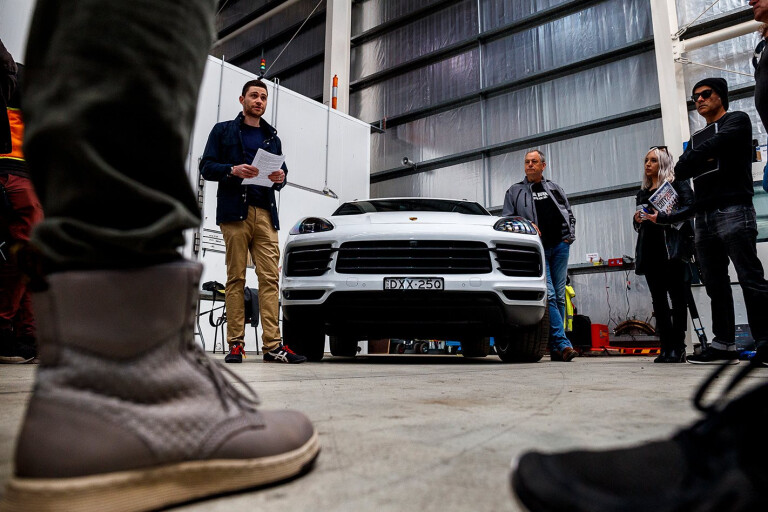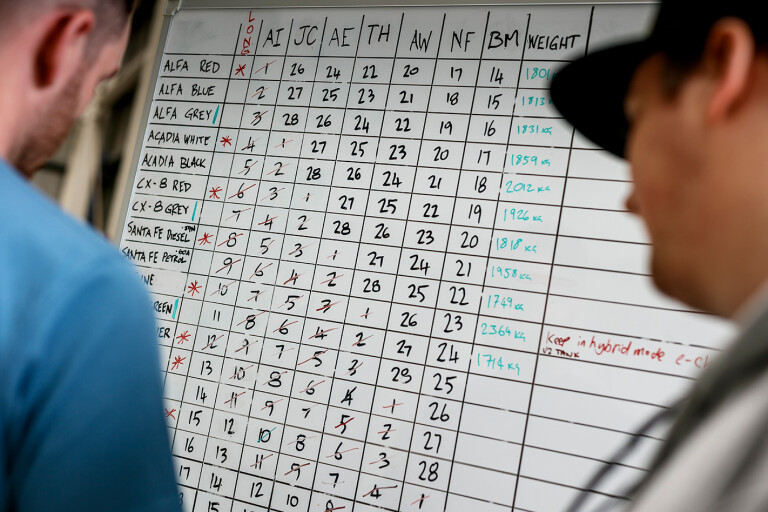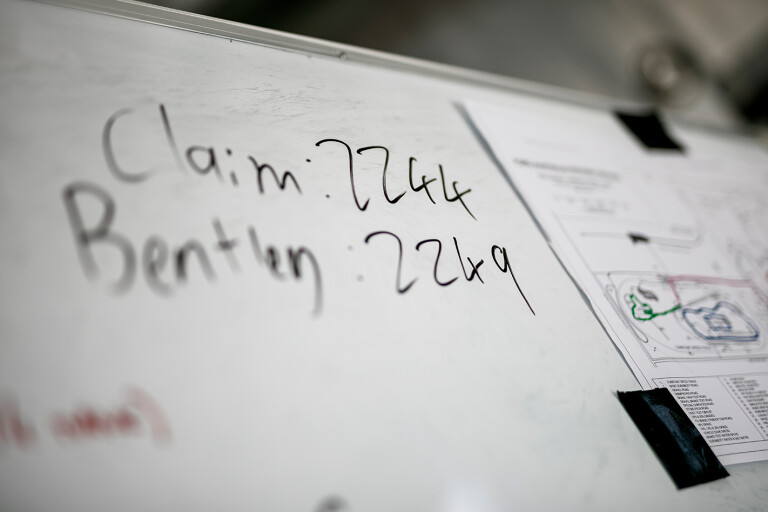
LURKING AT the far end of Ford’s You Yangs proving ground is an unprepossessing-looking shed. Blink and you’d miss it, but located amongst the hoists and workshop equipment within is a weighbridge and seeing as it was located en route to many of our COTY test tracks, we figured we’d put every single vehicle onto the scales. All 47 cars at COTY this year had to strip off, suck the gut in and hope for the best. We normalised the figures to take into account tank sizes, fuel weights, and discrepancies between tare and kerb weights. We also inspected the as-tested sheets to see if there were any particular options that were responsible for an inordinate weight gain.

Some results were fairly predictable. The Alpine A110 was lightest at 1094kg, just pipping Volkswagen’s base model Polo 70 TSI at 1111kg. Few though would have picked Porsche to front up with the fatty, its Cayenne E-Hybrid creaking onto the weighing gear at a whopping 2364kg.
More interesting than absolute numbers, however, was what the scales proved against manufacturer claims. Hats off to Ford for accuracy here. The press pack told us the Focus Trend 1.5 should weigh 1336kg and it was bang on the money. To make things absolutely fair we measured the amount of fuel in the cars and calculated representative tare and kerb weights from that.
The wooden spoon probably ought to go to Alfa Romeo. Its Stelvio Ti should have weighed 1619kg, but it tipped the scales some 187kg heavier. That’s around 11.5 percent heftier than buyers would expect. The base Stelvio and the diesel were also a good deal heavier than the manufacturer claim, up by 138 and 167kg respectively. The five-seat diesel Stelvio also weighed 13kg more than the seven-seat diesel Mazda CX-8, which nobody saw coming.

Audi was no angel here either, its A8 50 TDI adding 184kg to the 1975kg claimed kerb weight. And no, myself and Toby Hagon weren’t hiding in the boot. The Skoda Karoq also weighed in 11.35 percent heavier than its billed weight, with Citroen’s C3 adding 10.3 percent to its factory claim.
Holden and Toyota get credit for generally overquoted weights, and the Hyundai Santa Fe Highlander diesel also surprised us, weighing 1.85 percent under its claimed kerb weight, tipping the scales at 1958kg against a claimed 1995kg figure. Volvo’s XC40 T4 Momentum was second behind the Hyundai in the greatest percentage under claim, its 29kg representing 1.78 percent less than the factory claim.
There was also a fascinating discrepancy between the two Jaguar I-Pace electric vehicles we had on review, the car with passive springs being 20kg lighter than the one on air springs. Every little bit helps when you’re trying to eke a bit more range out of the Jag.

Finally, if somebody’s trying to tell you that seven-seat SUVs are uniformly fat and wasteful, it’s worth noting that apart from the Mazda CX-8 being more limber than the ‘sporty’ Stelvio, Peugeot’s 5008 three-row hauler tipped the scales some 215kg lighter than Holden’s Calais V Tourer. And Hyundai’s Santa Fe Active was also some 20kg lighter than the hefty Holden.
The take-out from this? Given that some cars are optioned differently from base spec, we’d understand if weights were a couple of percent either way of the datum. But more than ten percent for the worst offenders? The weight of your car is directly proportional to its fuel consumption and emissions. And, once again, it looks as if manufacturers are attempting to hoodwink us.



COMMENTS